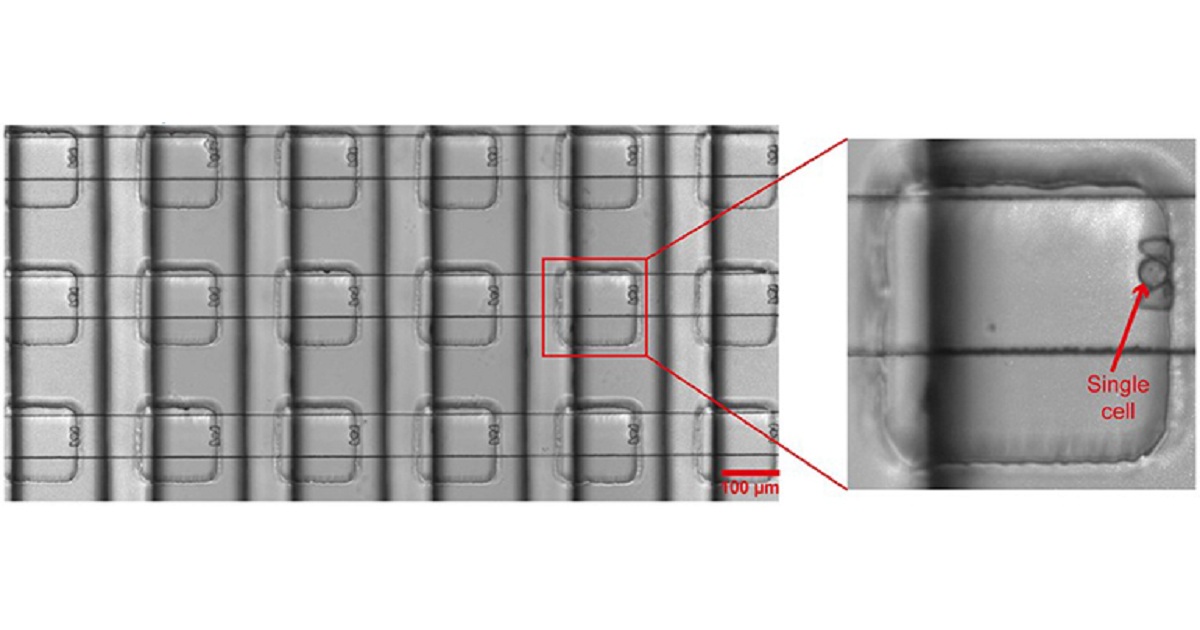New Device to Test Drugs on Thousands of Individual Living Cells
Medgadget | November 04, 2019

Studying how individual cells are affected by chemical compounds, viral infections, and other agents can have profound practical consequences for the development of new drugs and novel therapies for disease. Conventionally, antivirals are studied in terms of how they influence entire cellular cultures, which can lead to researchers missing important events that happen in only some cells. To observe individual cells, lab techs have to manually load individual cells into dozens of plate wells, which is highly laborious and very slow for something that should be done on the order of thousands of cells. Now, researchers at Penn state have developed a microfluidic device that has about 5700 wells that can be filled with individual cells. The cells can be exposed to a virus or other agent, and how each cell responds to that agent can be closely monitored using a microscope. One of the challenges in building the device was being able to successfully load most of the wells with live cells. This was accomplished thanks to a novel trap that allowed the team to make sure that over 90% of the wells get a resident cell. “Other people have tried to study infections in single cells, but they have to manually add cells to 96-well or 384-well plates,” said Wu Liu, one of the lead scientists behind the research. “This is tedious and time-consuming. With our trap and microfluidic device, we can observe more than 5000 single cells at one time.”